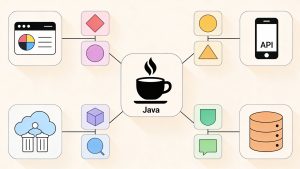Google Cloud Spanner represents a groundbreaking advancement in database technology, seamlessly merging the strengths of traditional relational databases with the scalability typically associated with NoSQL systems. This innovative platform is designed to handle massive workloads across multiple regions, offering a globally distributed, strongly consistent, and highly available solution for data management.
Key Features
Google Cloud Spanner boasts several impressive capabilities:
- Multi-version database utilizing synchronous replication
- TrueTime technology integrating GPS and atomic clocks
- Familiar SQL interface for queries
- Dynamic data partitioning for load balancing and performance optimization
Architecture Overview
The architecture of Cloud Spanner is meticulously designed to support its role as a globally distributed, highly consistent, and scalable database system. At its core, Spanner is organized into a “universe” that spans multiple zones, each containing specialized servers called spanservers.
Key Architectural Components
- Data Sharding and Tablets: Data is broken into smaller chunks called tablets, distributed across multiple spanservers and stored as key-value pairs with timestamps for versioning.
- Dynamic Partitioning: Tables are divided into splits that can be dynamically adjusted based on workload or size, ensuring even load distribution and optimal performance.
- Paxos-Based Replication: Utilizes the Paxos consensus algorithm to manage replication across multiple zones, ensuring consistency among replicas.
- Multi-Zone Deployments: Spanner instances span multiple zones within a region, enhancing availability and providing low-latency access for global deployments.
- Colossus Distributed File System: All data is stored on Colossus, designed for distributed and replicated file storage, ensuring high durability and resilience to hardware failures.
Paxos Mechanism
The Paxos Mechanism is a critical component of Spanner’s architecture, operating on the principle of distributed consensus. It ensures that a group of replicas (Paxos group) agrees on a single value, such as a transaction’s commit or the leader responsible for handling updates.
Leadership and Responsibilities
- One replica in each Paxos group is designated as the leader, handling all write operations for its split.
- Other replicas serve as followers, processing read requests to improve performance.
- The leader coordinates updates, assigns timestamps using TrueTime, and ensures data consistency across the group.
Transaction Management
Cloud Spanner manages transactions with a robust approach that ensures strong consistency, reliability, and high performance.
Write Transactions
- Lock Acquisition: The Paxos leader acquires write locks on rows being modified.
- Timestamp Assignment: TrueTime assigns a globally consistent timestamp to the transaction.
- Majority Replication: The leader sends transaction details to a majority of replicas for acknowledgment.
- Commit Wait: A brief waiting period ensures the commit timestamp is in the past for all replicas.
Read Transactions
- Strong Reads: Always return the latest committed data, ensuring consistency by verifying the latest timestamp using TrueTime.
- Stale Reads: Allow a small degree of staleness in exchange for lower latency.
TrueTime API: The Heart of Global Consistency
The TrueTime API is a key innovation in Cloud Spanner, enabling it to function as a globally distributed, strongly consistent database. It provides a globally synchronized and consistent view of time across all nodes in the system.
TrueTime Components
- Atomic Clocks: Measure time based on atomic vibrations, providing precise timekeeping with minimal drift.
- GPS Clocks: Rely on satellite signals for accurate time information and global synchronization.
Key Features Enabled by TrueTime
- Global External Consistency: Ensures transactions are serialized in the same global order across all replicas.
- Lock-Free Transactions: Allows for lock-free read-only requests, improving scalability and performance.
- Atomic Schema Updates: Treats schema changes as transactions with specific timestamps for consistent application across servers.
- Historical Reads: Enables snapshot reads for audits or debugging purposes.
Google Cloud Spanner represents a significant leap forward in database engineering, offering a powerful solution for enterprises that require global-scale operations while maintaining the robustness and reliability of traditional relational systems. Its innovative architecture, supported by the Paxos consensus mechanism and the TrueTime API, provides an exceptional foundation for handling distributed transactions, ensuring external consistency, and maintaining high performance at a global scale.
Read more such articles from our Newsletter here.



